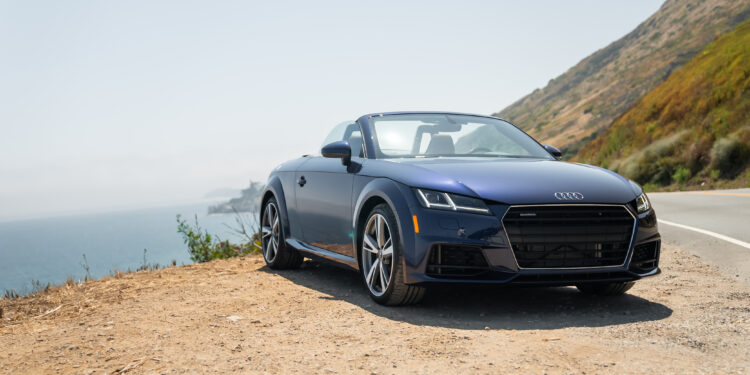I must’ve been about ten when I caught my first glimpse of an Audi TT as it blasted past us on one of Puerto Rico’s many cratered highways. From the backseat of my dad’s Mitsubishi Montero, I could only look down at the speeding silver coupe, unable to determine what it was. But even though I only saw it for an instant, its sporty shape, a rare sight on the island, had fully captured my attention.
Minutes later, as we prepared to get off on our exit, my dad said, “That’s it!” pointing to a massive billboard by Audi San Juan announcing the TT’s arrival to PR. In a place where spotting a Chevy Corvette or a Porsche 911 was a big deal, seeing Audi’s speeding two-door for the first time was like watching a supercar fly by at full throttle. It would be months before I spotted another, but I couldn’t help but stare every time I did.
Its appeal didn’t just extend to car-obsessed kids. Globally, Audi sold 178,765 first-gen TT coupes and a further 90,733 roadsters by 2006. However, after three generations over 25 years, changing market demands have seen its sales figures shrink to just a few hundred units yearly in the U.S. In response, Audi has decided to shut down its production line at the end of this year, ending the TT’s story, at least for now.
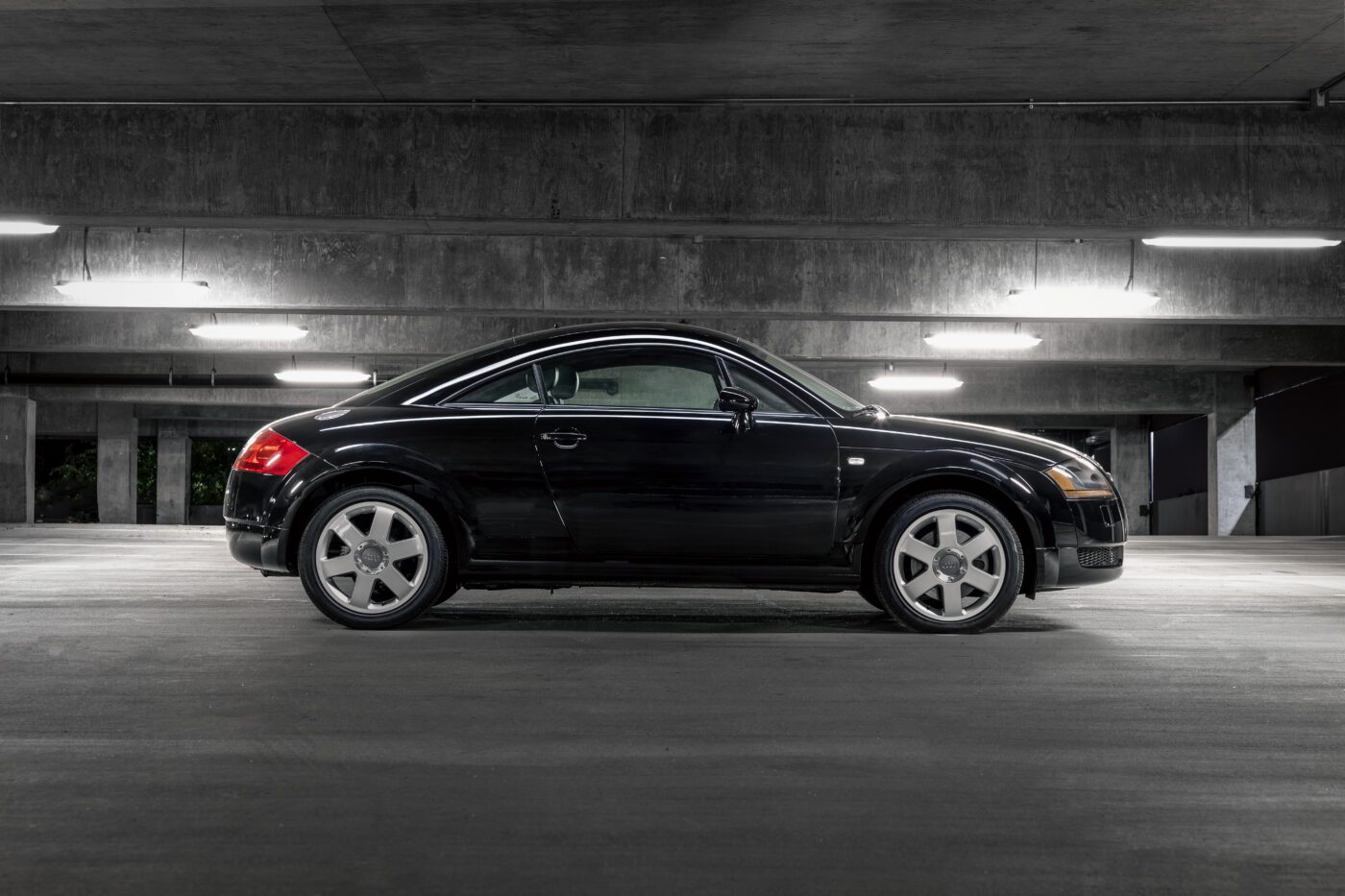
A Frankfurt Debut
Like many of the most impactful sports cars of the last decades, the TT began as a design study penned in Southern California. Freeman Thomas and J Mays, two designers based in Volkswagen of America’s Simi Valley Design Center, created its initial sketches in early 1994, naming it the Bauhaus Coupe. A year later, the TT, whose name draws inspiration from the Tourist Trophy races held annually since 1907 on the Isle of Man, appeared in concept form at the 1995 Frankfurt Motor Show in September.
Show attendees instantly fell for its simple but sleek design, and sensing sizable demand for it, Audi green-lit the coupe for production in December 1995. However, as the world caught its first glimpse of the two-seater, the carmaker was going through a significant transition, revamping its portfolio as it worked to cement itself as a truly premium brand. Thus, the TT didn’t just have to sell. Its mission was to attract new customers to the brand, serving as Ingolstadt’s halo car for the late 90s.
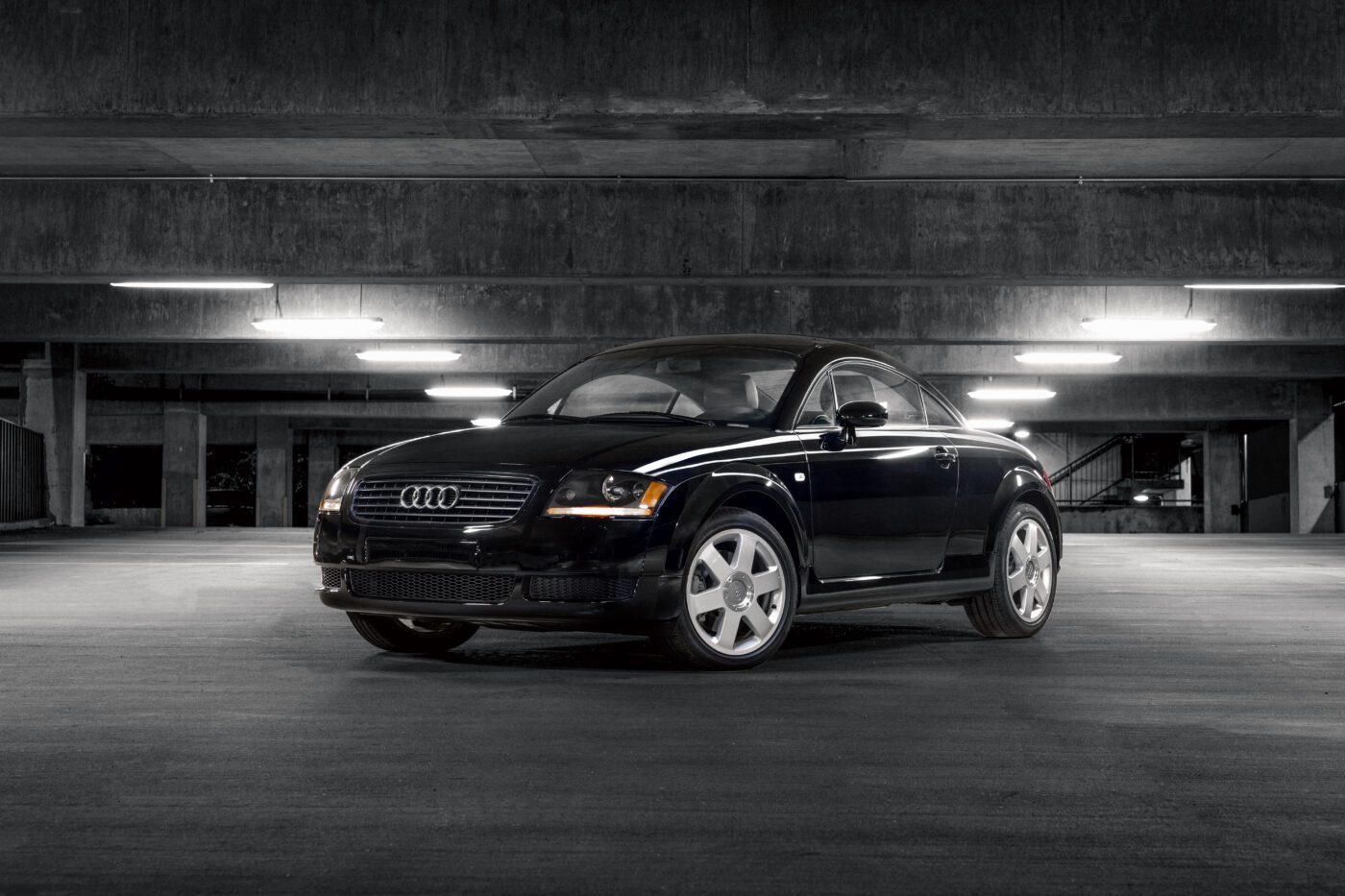
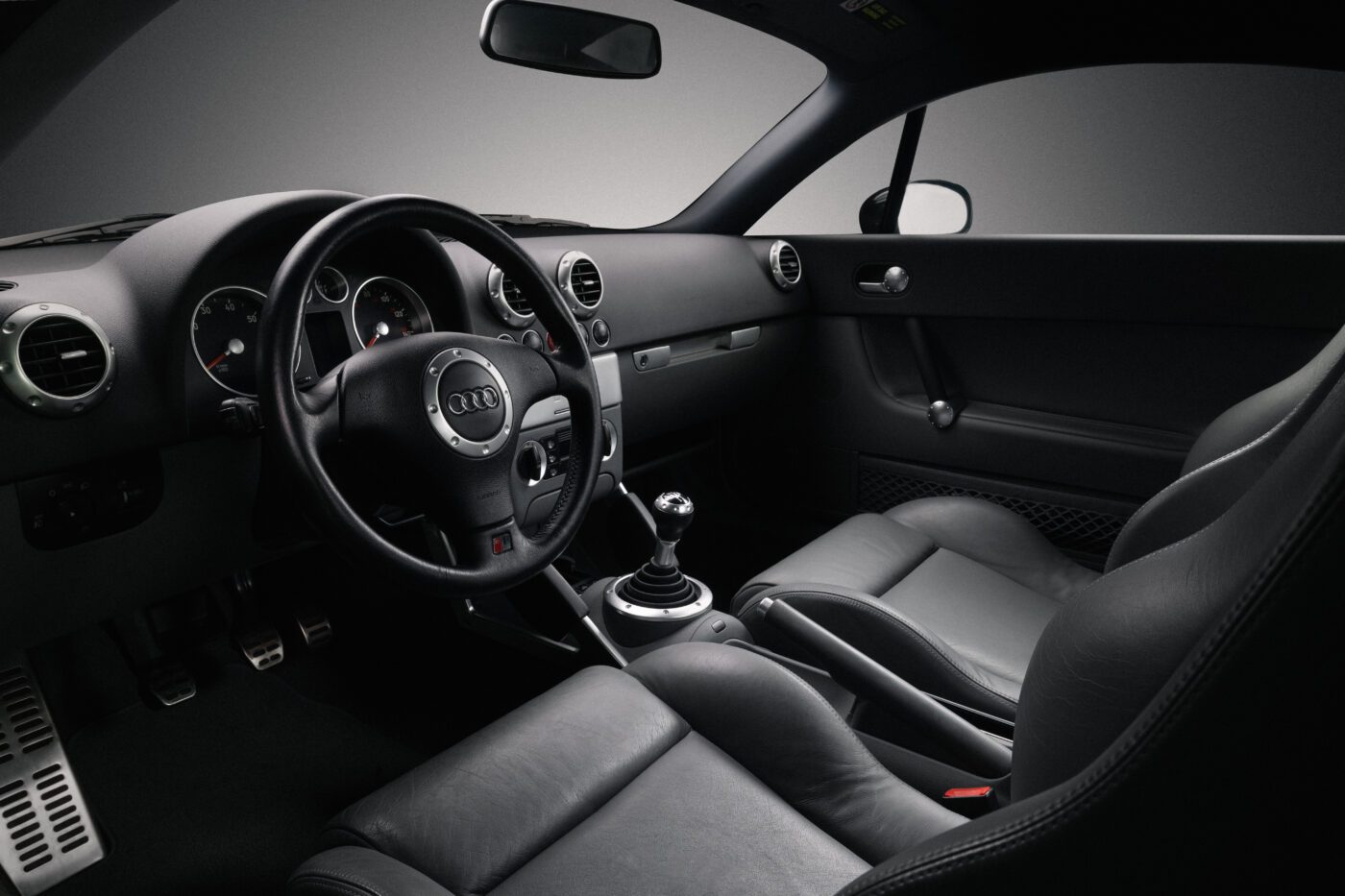
Torsten Wenzel, an Audi exterior designer at the time, stepped in to transition the TT’s move from a one-off concept to a series production car, later recounting: “To us, the greatest praise was when the trade press noted appreciatively that not much had changed from the study to series model, although we did, of course, have to adapt many details due to the technical specifications for the series version, including the proportions.”
Too often, cars lose some of their visual magic as they transition from the concept stage into production. As stringent regulations restrict designers and engineers alike, these concept-like production vehicles have become a rare sight, with only the Lexus LC 500, BMW i8, and Audi’s own R8 coming to mind over the last two decades. This originality proved key to the TT’s success, as except for a new rear window, it appeared virtually unchanged from its Frankfurt debut.
Through The Years
The TT formally went on sale in 1998, with its Roadster variant following shortly and, as stated earlier, sold in massive numbers. However, as it moved into its second generation in 2006, it didn’t just grow physically larger and more potent with subsequent TTS and TT RS variants. It got a stablemate in the form of the R8. And while Audi’s supercar wore unique styling, its design language can be directly traced to the tiny TT. By this point, the impact of its simple but stylish design was undeniable.
Although sales remained strong after the second-gen TT’s introduction, the 2010s and the global recession that accompanied them were troublesome. Sales in the U.S. shrunk considerably, and despite the TTS and TT RS holding their own as serious sports cars in period comparison tests, sales figures took nearly half a decade to recover.
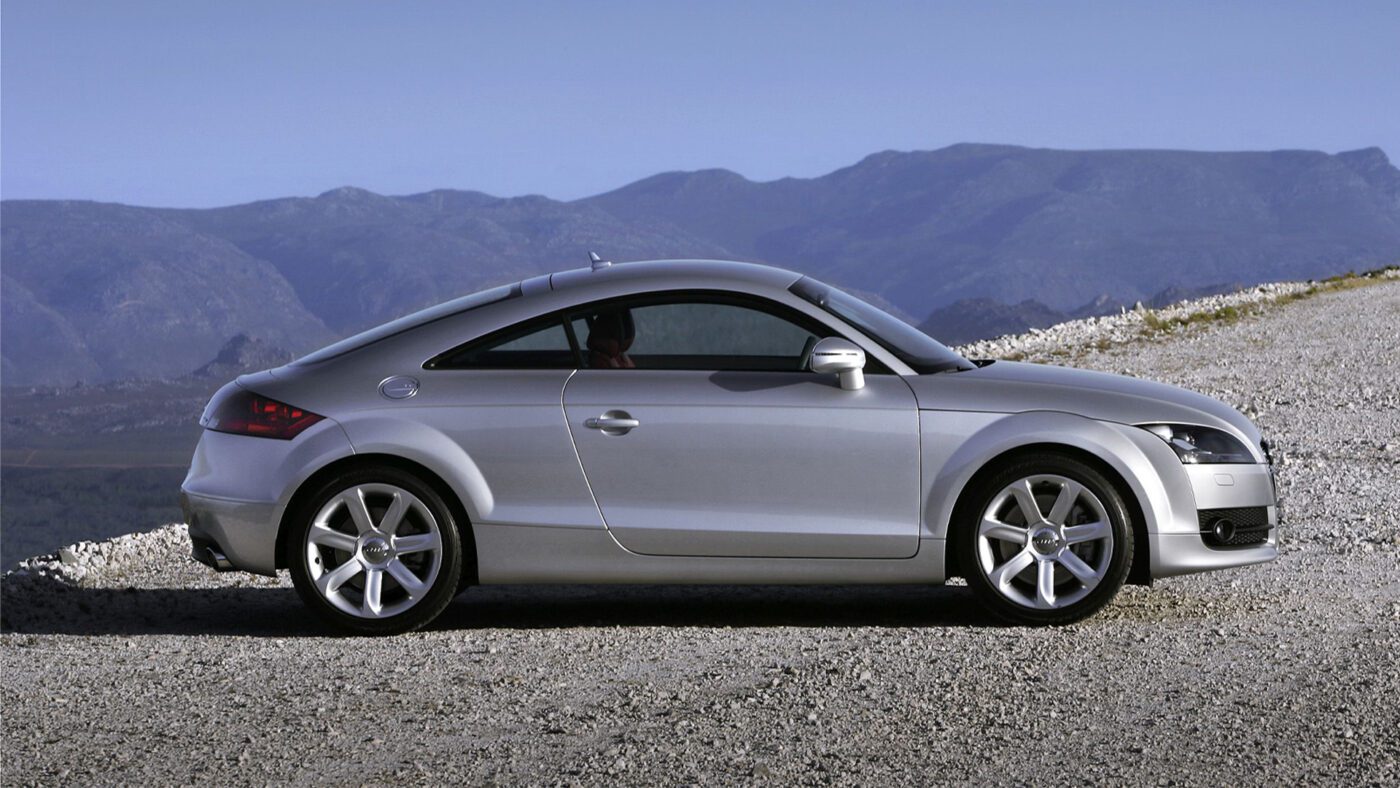
2014 saw the arrival of the TT’s third and final generation, simply known as the Mk3. Based on Volkswagen’s MQB platform, the little sports car benefited from significant performance improvements, as did other VW products of the time, like the excellent Mk7 Golf GTI. The roadster, TTS, and TT RS followed shortly, benefitting from this new platform’s significant advancements.
The RS even became a proper mini supercar, combining a 394-horsepower turbo inline-five-cylinder engine, all-wheel drive, and more aggressive aero than ever. It would rip to 60 mph in 3.6 seconds and top out at 174, figures that far superseded those of the first-gen V8-powered R8.
The TT in 2023
Over two decades after my first encounter with that elusive silver coupe, I was reunited with the Audi TT, this time a Navarra Blue roadster with a Palomino Brown interior. And instead of Puerto Rico’s bumpy roads, I logged a few hundred miles on the famed Pacific Coast, crisscrossing twisty mountain roads and beachside highways.
While this roadster is neither a TTS nor a TT RS, it’s still charming and zippy. Its 2.0-liter turbocharged four-cylinder puts out a modest 228 horsepower, while its seven-speed dual-clutch transmission rips shifts so quickly that it makes that output figure feel underrated. Couple its straight-line performance with a balanced chassis, a compact footprint, and a lightweight layout, and you get a recipe for a fun, sporty cruiser.

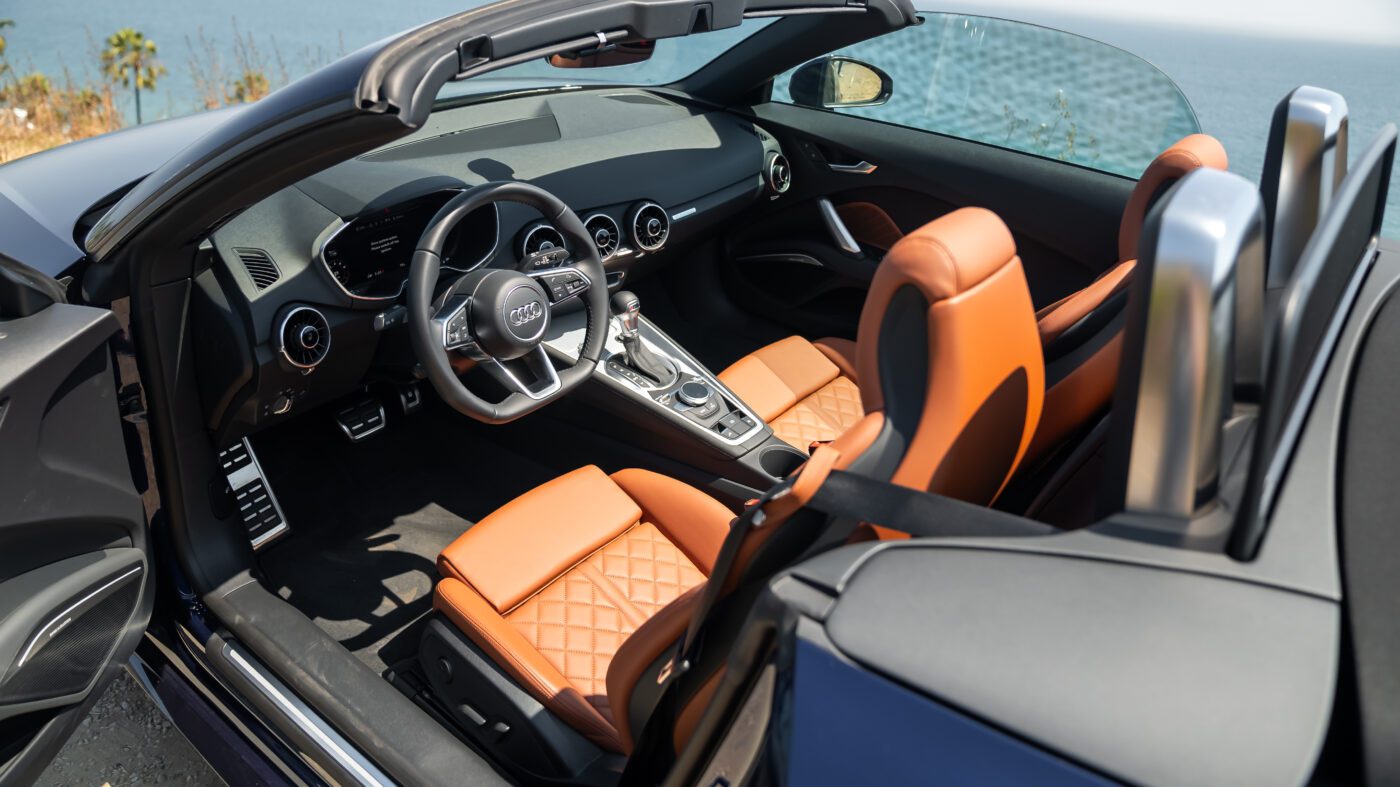
As I made my way through the twisty canyons above Malibu, I couldn’t help but feel bummed that the TT didn’t sell as well as it should have. I mean, it has all the good on paper. It’s small, relatively light, fun to drive, and gorgeous. So what gives?
The answer, of course, is complex. We could just blame the meteoric rise in popularity of SUVs in the last decade, but small, fizzy cars are down across the board. Such specialized machines seem more challenging than ever to justify as consumers demand their vehicles to do more. The trend isn’t to have multiple cars but one that can do everything.
What’s Next?
So, where does this leave the elegant Audi TT? For one, we know it’ll go out of production at the end of this year without a straightforward replacement. However, the ever-creative rumor mill has cited many possibilities for the coupe’s return. Some have guessed it’ll return as an EV, a crossover, or a blend of both. If it returns, we know it won’t be in the same shape we’ve come to know and love.
As I write this, it’s not too late to get a TT, although the excellent TT RS went out of production last year. A quick search on duPont REGISTRY reveals a handful for sale nationwide in both coupe and roadster forms.
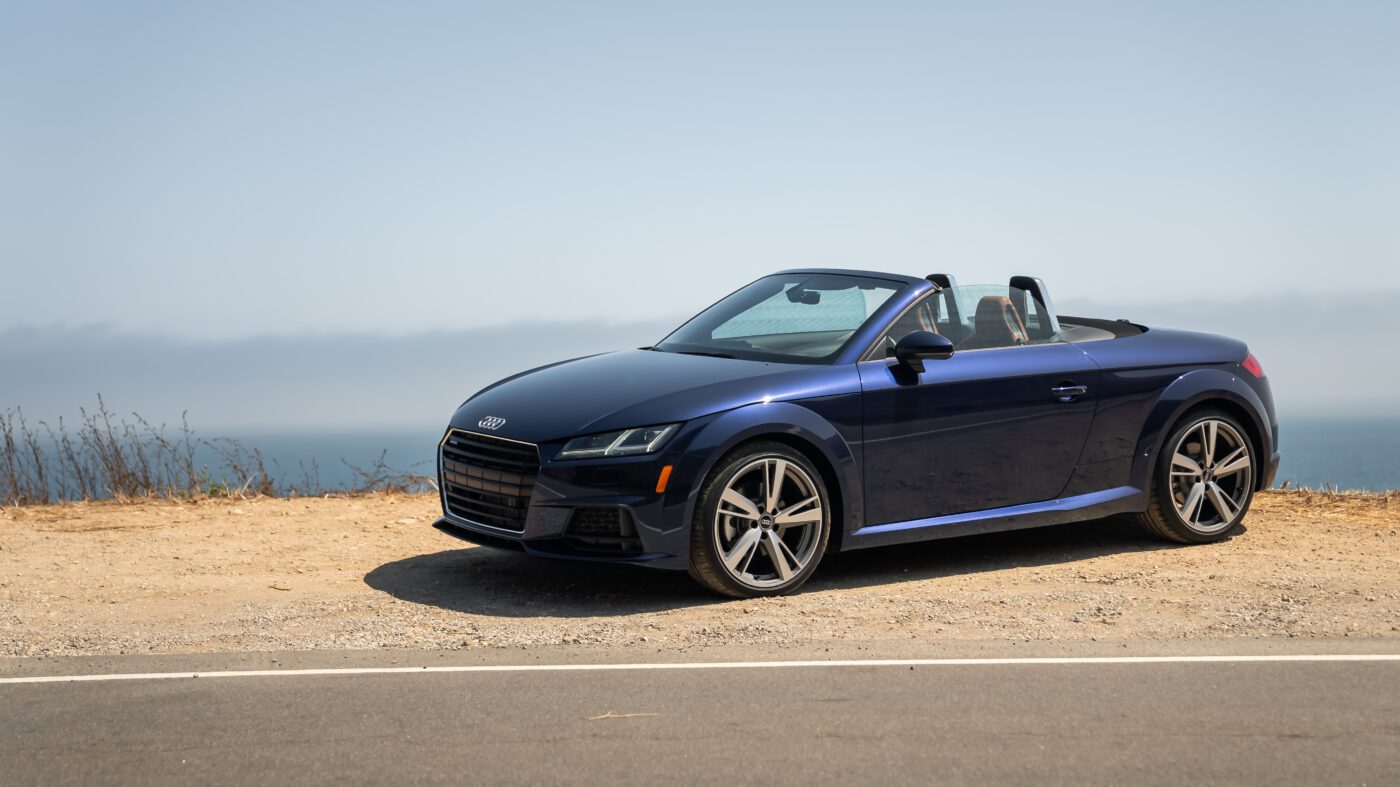
As I wrapped up my week with the TT and learned more about its story, I couldn’t help but be surprised at how influential Audi’s little sports car has been, even unlocking a memory I’d forgotten entirely. While it didn’t define itself by its handling or straight-line performance, the impact of its design philosophy is immeasurable, namely how it surfaced across Audi’s portfolio in cars like the R8 or even in futuristic concept form on the big screen in Will Smith’s I, Robot.
While its future is uncertain at this point, one thing is for sure: we’ll miss it once it’s gone.

